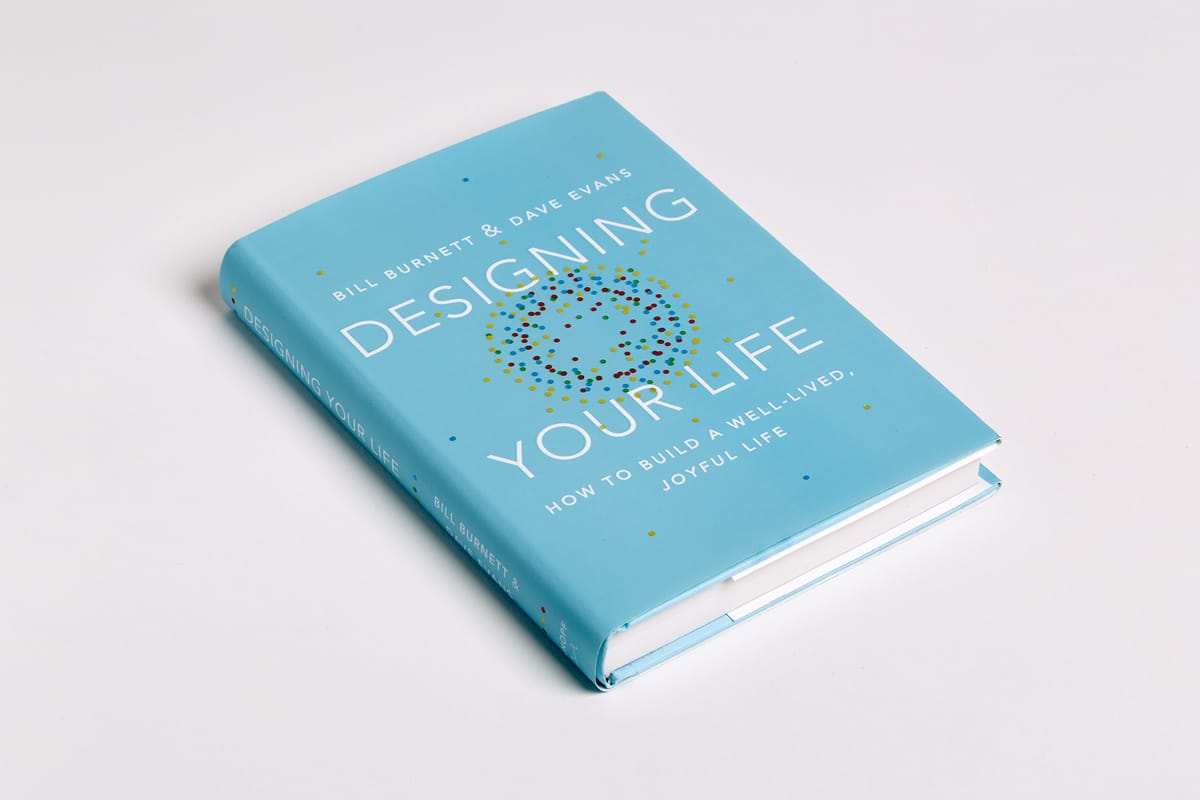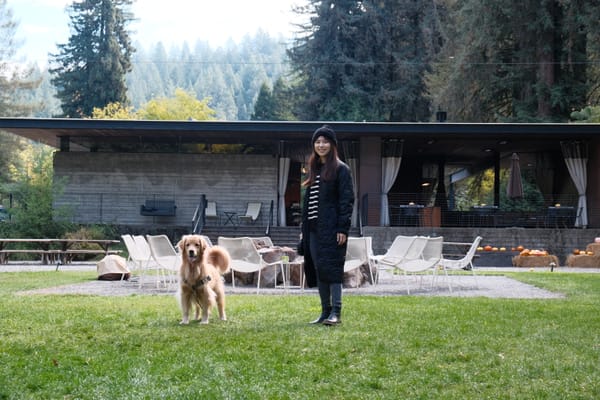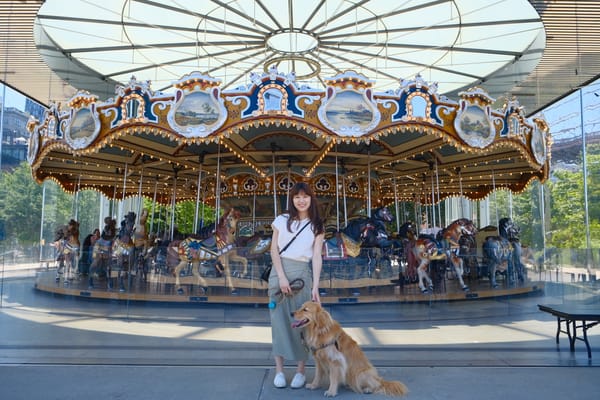《Designing Your Life》讀後心得:用設計思維來設計人生、評價人生的4個維度、2個找工作的新思維

近期最喜歡的一本書莫過於是這本Designing Your Life莫屬。他是由兩位Stanford Design School 教授將他們在史丹佛開設的一堂熱門課程「Designing Your Life」改編成書籍。
這本書於2024年春夏之間閱讀完畢,正逢我覺得人生卡住的時候,也是在重啟找工作的時間點。透過朋友推薦,所收穫的一本書,閱讀這本書給我很多啟發與靈感。
The Book in 3 Sentences
- 如同在產品設計時會用設計思維(Design Thinking)來切入,人生同樣也可以用設計思維來規劃及打造美好人生,透過設計思維裡常見的「prototyping」、「reframing」及「curiosity」等心法不僅可以幫助你創造獨一無二的人生,更可以完全扭轉你「看待人生」及「過生活」的方式。
- 不如以往強調的從財務、健康、休閒、家庭來評價人生,作者提出:Play、Health、Work、Love的四個維度來檢視人生,缺乏其中一個面向都將剝奪我們身而為人的體驗——我蠻認同這個新Framework。
- 在現代高度競爭的求職環境,該如何看待「找工作」及「Networking」呢?作者提出他的獨到見解。此外,也針對現代人類選項太多,提出如何有效而不痛苦的「做減法」,以及對於失敗的——「失敗分類法」。
How the book changed me
- 改變了我做選擇的方式,作者提出一個看似簡單卻不易參透的選擇四步驟:Brainstorm → Narrow Down → Choose → Move On。透過好的選擇技巧,便可以不需要過度擔心是否選對
There’s no choosing right, only choosing well.
- 終於在34歲我學會如何真正有效的減少選項。我是個idea很多的人,因此經常會覺得自己被過多的選項給弄的暈頭轉向,但又不想錯失任何機會,透過這本書中提及的心理學觀念,即——人在做決定之前無法知道自己真正的感受,讓我學到讓「做減法」變得務實可執行的技巧。
- 做決定不應只使用理性思考,也需要讓其他人類智慧有機會向你展示對於這個決定的認同感,書中提到人腦有一個做決定的部位「基底神經節」跟腸子有連結,也就是所謂的Gut feeling,由於這部位跟人類的語言系統沒有連結,因此無法用「文字」與你對話,因此在做決定的時候,不妨聽聽自己內心的聲音,將會發現你的感受其實並不是純感性、純衝動,而是自有其道理。
- Designing Your Life 改變我對找工作的觀點。作者強調不要再「找工作」了,而是要找多個「機會(offering)」,由於每一份工作除非真正到「談offer」階段,否則很難知道工作實際內容,如果只找一份工作,將會讓自己陷入「過度討好」的心理狀態,會因此行為變得虛偽,而間接影響對工作的滿意度。
- 真正好的工作是不會在網路上透過海投找到的,隱形的就業市場在——人際網路。
My Top 4 Quotes
You can’t make “the best choice,” because you can’t know what that best choice was until all the consequences have played out.
The problem with this [trying to learn about job from job posting] scenario is that there is no way to know the real “nature of the work” before you have gotten very close to actually getting the job. It’s impossible.
When we make a decision in the face of many options, or just while perceiving that there are lots of other options that we don’t even know about, we are less happy with our choice.
That’s the problem with letting go—it’s more of an inaction than an action, and your brain just hates that, the same way nature abhors a vacuum. So the key to letting go is to move on and grab something else. Put your attention on something—not off something.
Pros & Cons
我很喜歡這本書的其中一個原因是,他提出的方法論都是考慮過人性複雜面,並且多元包容。換句話說,他提出的解決方法、理論、跟方向都是經過設計、測試且修正後的——是有效的且體驗良好的。也因為如此,這本書的應用程度遠比其他書籍還高,不論你的職業是科技工作者、老師、演員、創業家,或者角色是大學生、為人父母、還是單身上班族,他提出的觀點都能適用——幫助你解決對人生感到卡住——或甚至,就是對生活有那麼一點隱隱不滿的狀態。
這本書的缺點是,如果你是在水深火熱中,急著想找一個扶木抱——例如你正在找第一份工作,需要最大化自己的機會與大量投入時間——那這本書並不能提供立即有效的方法,讓你可以讀完就能大展身手(most books can't anyways)。此外,我也認為由於這本書原先設計的受眾,是一群頭腦好、家庭收入高、選擇多的Standford學生,裡面提出的觀點,對於沒有強大信任系統、自信心、餘裕的人來說,可能會有種不切實際的感覺,建議讀者在選書時可以多多評估。
附錄
Summary + Notes
Intro: life by design
→ How to think like a designer: Be curious, bias toward action, reframe problems, know it’s a process, radical collaboration
- Start Where You Are
- Gravity Problem - Do not get stuck in it
- Life Design Assessment: Work, Love, Play, Health
- Building a Compass
- Finding connecting the dots between “who you are” “what you believe” “what you are doing”
- Work View vs Life View
- Way-finding
- Through Good Time Journal to find your engagement
- Energy and Engagement
- Getting Unstuck
- Use mind mapping to ideate solutions
- Design Your Lives
- Design 3 lives and gauge them against 4 metrics: Resources, Like it, Confidence, Coherence
- Prototyping
- Life Design Interview
- Prototype to ask good questions, outing hidden biases & assumption, iterating rapidly, creating momentum.
- Use brainstorming sessions - sticky notes methodology
- How Not to Get a Job
- Designing Your Dream Job
- People is the other world wide web
- Focus on offers–Not jobs
- Choosing Happiness
- How to make choices: Create, Narrow Down, Choose, Move on
- Failure Immunity
- Logging failures & categorize
- Building a Team
- Respectful, Confidential, Participative, Generative


![[干貨] 2024最新:三個免費的亞洲女性領導力與職場資源|讓你在美國工作無往不利](https://images.unsplash.com/photo-1556565681-67b9cd907d20?crop=entropy&cs=tinysrgb&fit=max&fm=jpg&ixid=M3wxMTc3M3wwfDF8c2VhcmNofDQ4fHx3b21lbiUyMHdvcmslMjBjb21wdXRlcnxlbnwwfHx8fDE3MjU1NzAxMzl8MA&ixlib=rb-4.0.3&q=80&w=600)

